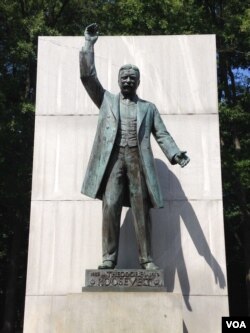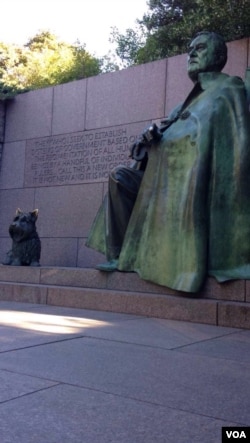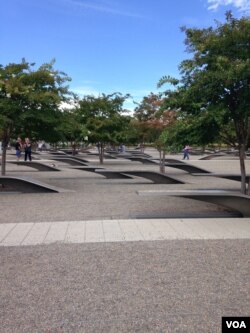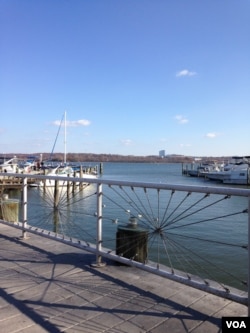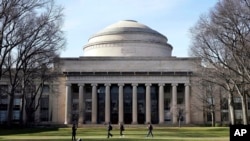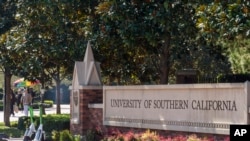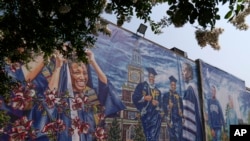Student Union
Have Metro, Will Travel: A Student's Guide to D.C.

Why not D.C.?
Washington, D.C. was built on a strategically chosen plot of land on the Potomac River. Contrary to popular belief, it was not built on a swamp. It was designed by French-born, American designer and engineer Pierre Charles L’Enfant, whom Washington.org says, "Presented a vision for a bold, modern city featuring grand boulevards" reminiscent of Paris.
Founded in 1790, the District was a compromise between Alexander Hamilton and Thomas Jefferson, who wanted the Capital in different places. (Jefferson wanted "the capital placed in a location friendly to slave-holding agricultural interests," according to Washington.org.)
L'Enfant's vision lives on successfully, and D.C. today is not only home to American government, but also to incredible architecture, beautiful green spaces, monuments and more.
If you are planning a trip to D.C. to experience American history and culture, (and, of course, take that incredible tourist photo of touching the tip of the Washington Monument), there are a ton of ways to enjoy it that are fairly inexpensive. Free parks and monuments dot the landscape of the city.
Here are six places in D.C. easily accessible by public transit.
Theodore Roosevelt Island
Theodore or "Teddy" Roosevelt Island is an island in the middle of the Potomac honoring the 26th President of the United States. According to the National Parks Service it's about 88.5 acres of woodlands. You can walk around the entire island to see wildlife and beautiful views of the Potomac. In the middle, there is a statue of Roosevelt himself. If you are tired of the city itself, this island is a perfect getaway into nature that isn't totally out of the way. The views of Georgetown are lovely.
Cost: Free
Closest Metro Station: Rosslyn on the Blue, Orange or Silver lines.
Franklin Delano Roosevelt Memorial
Yes, another Roosevelt. The Roosevelts have some of the most gorgeous memorials in D.C. This one is dedicated to the 32nd President of the United States, and each of the four terms of his presidency has its own room. With walls covered with some of Roosevelt's most inspirational quotes -- "The only thing we have to fear is fear itself" -- and statues of Americans listening to Roosevelt's radio addresses or standing in bread lines, the memorial is a trip through time. If you're in D.C. for longer than a few days, it's also a great place to study. Sit by Roosevelt's statue and watch as people touch his finger for good luck. (And maybe slyly do the same on your way out. Hey, we could all use some luck!)
Cost: Free
Closest Metro Station: Smithsonian on the Blue, Orange or Silver lines.
Freedom Plaza
While I was exploring D.C., I decided to walk through Pershing Park, and came upon this plaza by happenstance. On the ground there are quotes from American luminaries about D.C., along with a giant stone map of the Capital. You may not be able to step inside of the real White House, but you can step on top of it here!
Cost: Free
Closest Metro Station: Metro Center on the Red, Blue, Silver or Orange lines, or Federal Triangle on the Blue, Orange or Silver lines.
The National 9/11 Pentagon Memorial
If you are looking to honor those who lost their lives on 9/11 at the Pentagon, the National 9/11 Pentagon Memorial in Arlington, Virginia is a good place to start. The memorial is organized by the age of the victim, each victim receiving their own bench to commemorate their life. I went on 9/11 this year, and the memorial was filled with people paying their respects, and looking at the pictures left by the families of the loved ones they lost all those years ago.
Cost: Free
Closest Metro Station: Pentagon on the Blue or Yellow line.
King Street/Old Town Alexandria/Alexandria Waterfront
King Street in Alexandria is filled with shopping, food and historic sites. One could take their time, spend the entire day, and probably not even get a few blocks down. At the end of King Street is the waterfront, where you can relax on a bench and watch the boats go by. And, if you are tired from all of the walking you've done by the time you get there, you can take the free King Street Trolley back to the Metro station. (It goes both ways, so if you'd rather use the trolley both ways, it's very handy!)
Cost: Free, unless you splurge on food and gifts.
Closest Metro Station: King St.-Old Town on the Yellow or Blue lines.
Smithsonian National Zoological Park
The Smithsonian National Zoological Park is part of the Smithsonian family in D.C., meaning it's all free. There are all sorts of fascinating animals at the zoo beyond the normal lions, tigers, and bears. (Oh my!) Asian elephants, pandas, sloths and vipers are all on display. The zoo is a great way to spend a day, and there are many seasonal events to enjoy there, like Zoo Lights in December.
Cost: Free. Pack a lunch to avoid food costs.
Closest Metro Station: Woodley Park (Zoo/Adams Morgan and walk north on Connecticut Avenue) or Cleveland Park (walk south on Connecticut Avenue) on the Red line.
How to get to D.C.
Before you get around the city, you have to get to the city!
- Fly: There are three airports. Washington National Airport is the closest to downtown D.C., and is directly on a Metro line. Baltimore/Washington International Airport and Washington Dulles International Airport require more travel into the city, but fares are often less expensive than the conveniently located National Airport.
- Amtrak: Amtrak trains come to Union Station, which is Metro accessible, and just blocks from the Capitol.
- Bus: A good selection of buses end at Union Station, including Greyhound and MegaBus.
Some ways to stay in D.C.
- Airbnb
- Hotels, like the Holiday Inn Washington-Capitol, which is a few blocks from the Mall. I stayed here before moving in for the fall semester, and it was really great to be so close to all of the tourist locations for a low price.
- The cheapest way to stay in D.C. is to crash on a friends couch! All semester people were in and out of the dorm I stayed in. So find friends in the area, and stay for free!
How to get around D.C.
All these D.C. locations are accessible by the Washington Metropolitan Area Transit Authority (WMATA), or Metro, as it is known in D.C., (and Paris, for that matter). It is one of the easiest ways to get around. As a tourist living in the city for an academic semester, I've fallen in love with the ability to travel almost anywhere on the Metro.
Pro-tip for navigating the system: Always walk left and stand right on the escalators. The locals will love you for it.
The Metro is clean, easy to navigate and sometimes on time. Track repairs have caused the Metro to be frequently crowded and delayed. Chill. If you are a tourist, be patient, or get above ground and walk.
Washington is laid out on a grid, much like New York City. Streets -- generally -- ascend by number and letter, with avenues crisscrossing the city named for states, patriotic concepts and important Americans like presidents. (Independence and Constitution avenues, Madison, Jefferson, L'Enfant Plaza.) Frederick Law Olmstead -- who designed Central Park in New York City -- also designed parks in D.C. Fountains abound in summer, and statues in the "circles," or rotaries hold secrets to inform you which direction to go. (Hint: John Wesley)
The best way to find your route is look at the Metro map -- in all stations, in Metro cars and online -- and note the name of your exit station. To know which side of the tracks to embark, you'll have to know the name of the final stop. Too complicated? Ask a station master.
Looking for more places accessible by D.C. Metro? Check out my other story. And if you have any comments or questions, here's our Facebook!
See all News Updates of the Day
Malaysian official: Schools can’t turn away from global tensions

Zambry Abdul Kadir, Malaysia’s higher education minister, said protests spreading across universities in the United States show that schools can’t ignore political tensions.
Helen Packer, reporting in Times Higher Education, said the minister reminded educators that universities are key in the development of leaders, individuals and societies. (April 2024)
Social media breaks are difficult, but necessary

Between online classes, maintaining social connections and working on projects, college students can have a hard time disengaging from the demands of technology.
In Florida International University’s PantherNOW, Ariana Rodriguez offers strategies for taking a break from social media. (April 2024)
- By Melos Ambaye
Many master's degrees aren't worth the investment, research shows

Nearly half of master's degrees have a negative financial return, according to new research by the Foundation for Research on Equal Opportunity, an economic research organization.
The study indicates that many graduate degree programs do not increase lifetime earnings enough to be worth it.
While 23% of bachelor’s degree programs yield a negative financial return on investment, 43% of two-year degrees and master’s degrees fail to deliver a return, according to the study by Preston Cooper, a senior fellow at FREOPP.
Cooper assessed the return on investment for 53,000 degree and certificate programs to determine whether a student’s lifetime earnings outweigh program costs and the risk of not completing their degree.
His findings show that a student’s field of study was the overriding indicator of return on investment at the undergraduate and graduate level.
Engineering, computer science and nursing bachelor’s degrees have high financial returns on investment, while programs in education, fine arts, psychology and English usually have low returns.
Graduate degrees in medicine and law tend to have strong payoffs. But a large share of master’s programs, including the MBA, frequently have low payoffs, according to Cooper.
Although workers with master’s degrees earn 16% more than those with only bachelor’s degrees, Cooper says the figure fails to account for students who had “higher preexisting earnings potential.”
“MBA students typically have high preexisting earnings potential, having often chosen high-ROI undergraduate majors such as finance and economics,” Cooper writes. “So the MBA adds little value on top of that.”
The study indicates that high starting salaries are predictors of high returns on investment. Degrees with starting salaries of $57,000 a year or more deliver the best lifetime returns.
But the return on investment of a degree can vary depending on the educational institution.
“Students interested in fields with low average pay can still find some schools that do well transforming those fields of study into high-paying careers,” Cooper writes.
The quality of an institution also matters, said William Tierney, professor emeritus of higher education at the University of Southern California.
“An MBA from Harvard is a likely ticket to a good job,” Tierney told VOA. “An MBA from the University of Phoenix, less so.”
But students pursue graduate programs for more than just financial reasons.
“Some degrees open up careers in fields that students may enjoy, such as in the performing arts,” Robert Kelchen, head of educational leadership at the University of Tennessee, Knoxville, told VOA.
“Others can help gain access to social networks or simply help students learn about a topic that is of interest,” Kelchen added.
Cooper told VOA that it might make sense for students in degree programs with low returns on investment to switch majors if they can still graduate on time.
He found the worst outcome for a student’s return on investment is dropping out of college “because they must pay for one or more years’ tuition and spend time out of the labor force.”
Lawmakers who fund higher education have a responsibility in ensuring “higher education delivers on its promise of economic mobility,” Cooper said.
Nearly a third of federal funding, including Pell grants and student loans, pays for higher education programs that fail to provide students with a return on investment, according to the study.
Cooper’s view is that “some schools should shut down low-ROI programs and reallocate institutional resources to programs with a better return.”
“There's definitely this narrative out there that higher education is always worth it, and you should always try to get that extra degree because it will increase your earnings,” he told VOA. “That's reinforced by colleges who make lofty promises regarding their graduate degree programs' outcomes, which all too often fall short.”
Harvard students end protest as school agrees to discuss Gaza conflict

Protesters against the war between Israel and Hamas were voluntarily taking down their tents in Harvard Yard on Tuesday after university officials agreed to discuss their questions about the endowment, bringing a peaceful end to the kinds of demonstrations that were broken up by police on other campuses.
The student protest group Harvard Out of Occupied Palestine said in a statement that the encampment "outlasted its utility with respect to our demands." Meanwhile, Harvard University interim President Alan Garber agreed to pursue a meeting between protesters and university officials regarding the students' questions.
Students at many college campuses this spring set up similar encampments, calling for their schools to cut ties with Israel and businesses that support it.
The Israel-Hamas war began when Hamas and other militants stormed into southern Israel on October 7, killing some 1,200 people and taking 250 hostages. Palestinian militants still hold about 100 captives, and Israel's military has killed more than 35,000 people in Gaza, according to Gaza's Health Ministry, which doesn't distinguish between civilians and combatants.
Harvard said its president and the dean of the Faculty of Arts and Sciences, Hopi Hoekstra, will meet with the protesters to discuss the conflict in the Middle East.
The protesters said they worked out an agreement to meet with university officials, including the Harvard Management Company, which oversees the world's largest academic endowment, valued at about $50 billion.
The protesters' statement said the students will set an agenda that includes discussions on disclosure, divestment, reinvestment and the creation of a Center for Palestine Studies. The students also said that Harvard has offered to retract suspensions of more than 20 students and student workers and back down on disciplinary measures faced by 60 more.
"Since its establishment three weeks ago, the encampment has both broadened and deepened Palestine solidarity organizing on campus," a spokesperson for the protesters said. "It has moved the needle on disclosure and divestment at Harvard."
Chinese students report interrogations, deportations at US airports
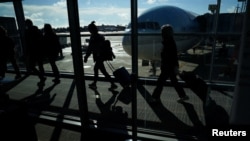
Academics from China are reporting increased scrutiny at U.S. airports, with valid visa holders being interrogated and turned away by Customs and Border Protection Agents.
Phones and laptops have been searched, and researchers have undergone extensive questioning about their work. One graduate student at Yale, who was midway through her PhD, was turned back at Dulles airport and banned from entering the U.S. for five years, according to The Guardian.




